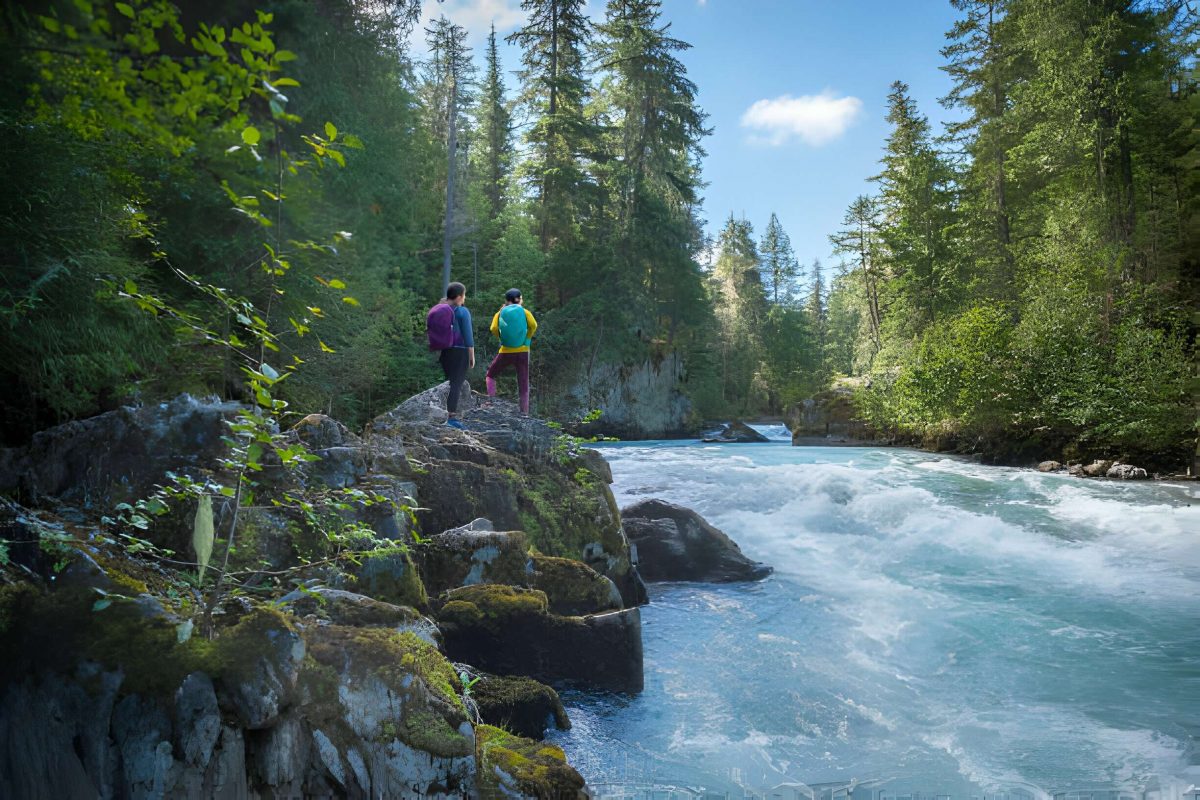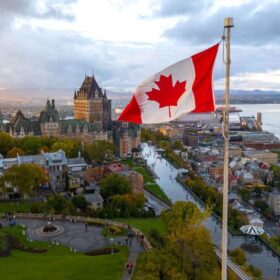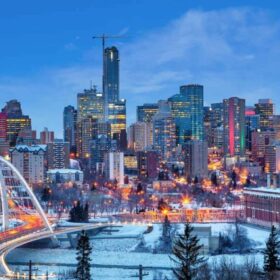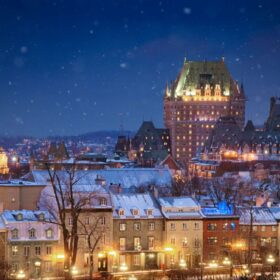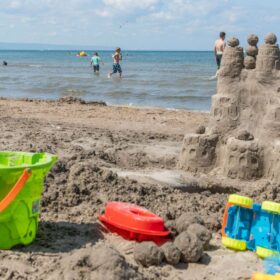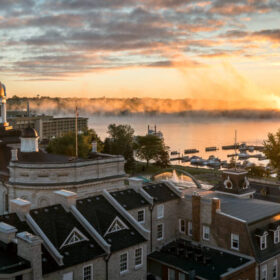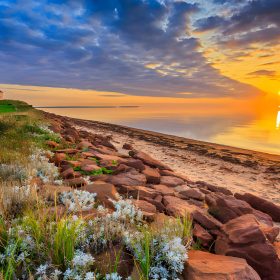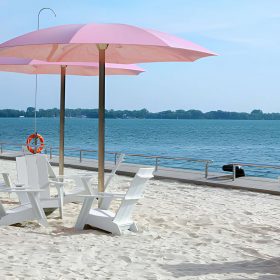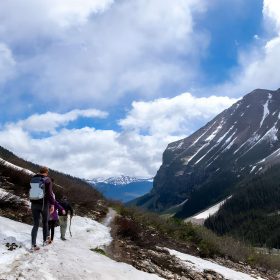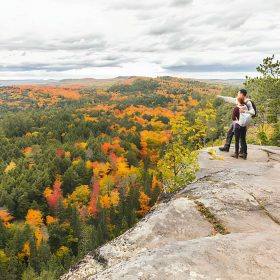While Whistler, British Columbia, is renowned globally for skiing, snowboarding, and mountain biking, it also stands out as one of best places in Canada for hikers of all skill levels. Some of the region’s most breathtaking vistas are accessible only by foot.
Whether you seek a challenging ascent with rewarding panoramas or a more relaxed hike leading to hidden forest gems, Whistler offers a trail tailored to your preferences.
Most of the trails discussed below are best explored from late spring to early fall when they are free from Whistler’s signature snow cover.
Despite the seasonal limitations, the popularity of hiking trails near Whistler has surged in recent years, prompting the implementation of crowd management plans at certain parks and trails.
Given that Whistler is a bear country, it is advisable to carry bear spray and remain vigilant on the hiking trails. Respecting the local wildlife involves keeping it refrains from feeding animals (no matter how adorable) and always packing out your trash.
Whistler’s top hikes cater to a diverse audience, from beginners to seasoned outdoor enthusiasts. Discover the finest trails with our comprehensive list of the best hikes near Whistler, B.C.
1. Garibaldi Lake
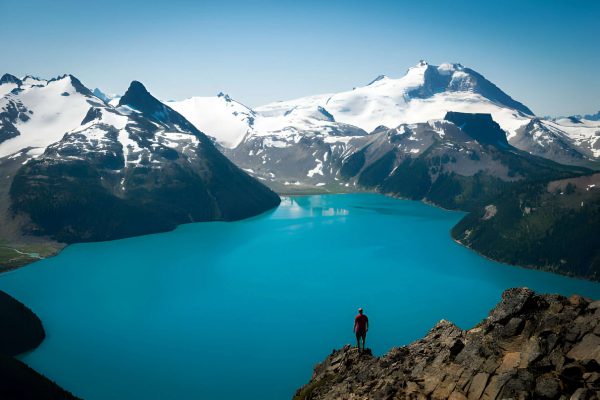
One of the most breathtaking scenes in BC’s Sea to Sky corridor is the vibrant turquoise Garibaldi Lake, a vast alpine lake that appears to embrace the awe-inspiring peaks encircling it (more details on those shortly). Situated in Garibaldi Provincial Park, an expansive park with rugged terrain stretching from Squamish to Pemberton, this hike, along with a few others on this list, offers a captivating experience.
Located just south of Whistler, the journey to Garibaldi Lake entails a substantial climb, spanning over nine kilometers one-way (18 kilometers return). However, those embarking on this trail will be generously rewarded.
The hike commences with seemingly endless switchbacks through the forest, eventually leading to meadows where, if timed right, hikers can be surrounded by stunning alpine wildflowers. Further ascent takes you above the tree line, revealing the iconic lake. By the time you reach the lake, you’re likely to have worked up a sweat, but the cold temperature of Garibaldi Lake—courtesy of the glaciers feeding into it—may feel refreshing.
While Garibaldi Lake is suitable for an extended day hike for experienced hikers, campers have the option to reserve a site at one of two nearby locations (Garibaldi Lake or Taylor Meadows) for an overnight stay. This allows you to explore the next two hikes on our list as well.
2. Panorama Ridge
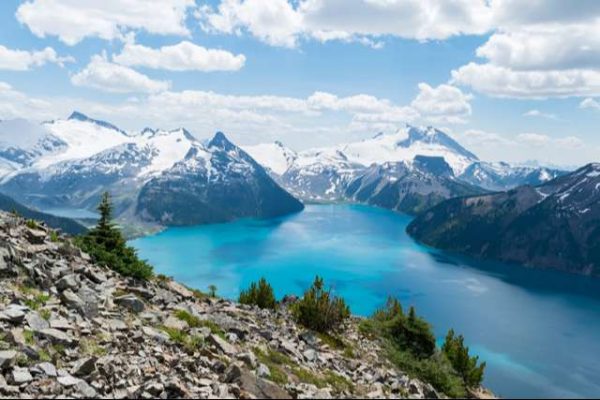
Another remarkable hiking alternative to explore the Garibaldi Lake area is the ascent to Panorama Ridge. Initially, both Black Tusk and Panorama Ridge share the same trail, but the paths diverge after Taylor Meadow. En route to Panorama Ridge from this point, hikers will encounter several babbling streams and fields adorned with wild mountain flowers. On a sunny day, there’s no better place to be—though encountering some early-season snow is not uncommon, given the considerable altitude.
After traversing the relatively flat and gentle meadows, be prepared for a continuous ascent through steep, scrambly rocks. Most hikers find the final section to be the most challenging part of the trek, but the breathtaking views from the summit make it entirely worthwhile, offering panoramas of Black Tusk, Garibaldi Lake, and Helm Lake.
Like Black Tusk, Panorama Ridge can be undertaken as a challenging day hike or combined with Black Tusk and/or Garibaldi Lake for an extended overnight excursion.
3. Black Tusk
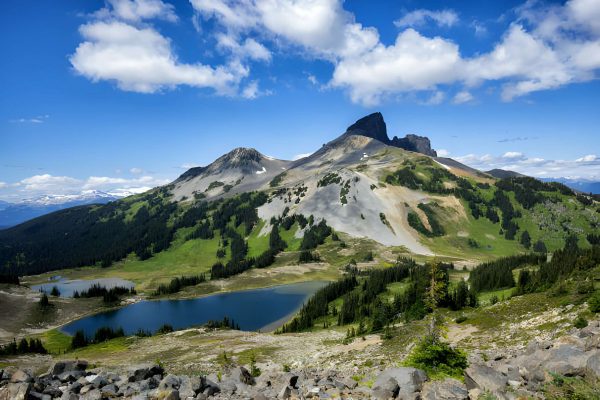
When you gaze south from the summits of Whistler and Blackcomb mountains, one of the most distinctive peaks that captures attention is Black Tusk. Fortunately for hiking enthusiasts, Black Tusk is an achievable hike, and reaching its summit provides a sensation of being on top of the world.
The trail initially aligns with the Garibaldi Lake path, but at the picturesque Taylor Meadows junction, a new trail leads you toward Black Tusk. As you ascend, the landscape undergoes continuous transformations. Eventually, you’ll find yourself in the alpine terrain, navigating loose shale towards the false peak of the Tusk, offering a captivating view down onto Garibaldi Lake.
The chimney, the ultimate section of the Black Tusk, presents a significant challenge and should only be attempted by those equipped with (and knowledgeable in using) mountaineering gear. Not to worry, though—the viewpoint overlooking the base of the chimney is accessible to hikers and provides one of the most exceptional vistas.
This hike can be undertaken as an extensive day trip or as part of an overnight adventure, combined with Garibaldi Lake.
4. High Note Trail
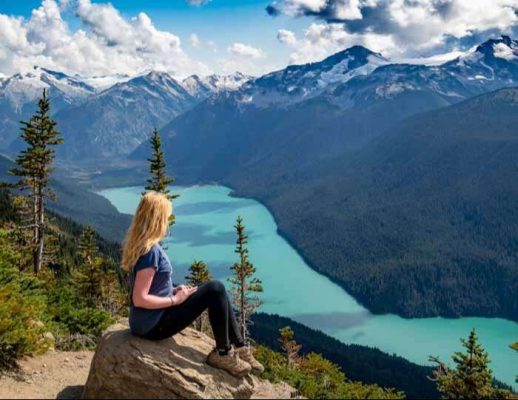
If you aim to explore the alpine region around Whistler without tackling a steep ascent, the High Note Trail is the perfect hike for you. While you’ll need to invest in a gondola ride up Whistler Mountain and take the Peak Chair (an experience in itself), opting for mechanical transport gives you additional time to enjoy the alpine environment.
Even regular skiers on Whistler Mountain rarely traverse the section covered by the High Note Trail, as it loops behind the mountain and wanders through Whistler’s backside, providing breathtaking views of Cheakamus Lake far below.
The trail meanders back to the top of the gondola, passing by whimsical, Seuss-like plants and flowers as you descend to the subalpine area. The entire journey is just under 10 kilometers back to the gondola, but there’s no need to hurry—numerous shorter trails can (and should!) be explored from this point.
5. Brandywine Falls
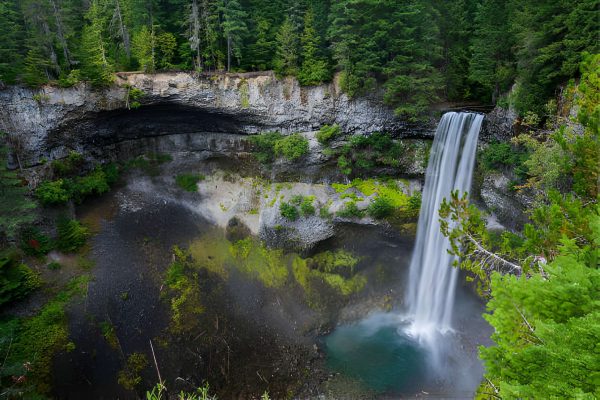
Heading toward Whistler from Vancouver, you’ll encounter a sign for Brandywine Falls just south of town. Take a moment to stop and do yourself a favor. With only a one-kilometer round trip, this hike is brief enough not to disrupt your other Whistler travel plans, yet the impressive Brandywine Falls makes it well worth the effort.
All things considered; this is a simple, uncomplicated hike. As a popular tourist spot, the trail is marked. You can view the falls from a designated platform or the side of the trail just past the platform.
While witnessing the water cascade down in the summer is a magnificent sight, the sight of massive frozen icicles over the falls makes it equally worthwhile in the winter.
6. Ancient Cedars Trail
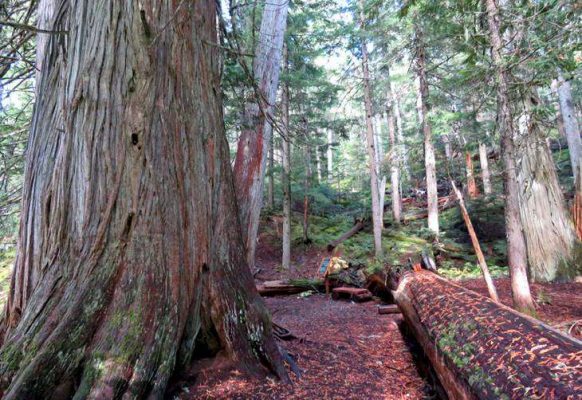
If you are seeking something more accessible than the Garibaldi Lake/Black Tusk/Panorama Ridge trio, consider the Ancient Cedars trail. Covering just under five kilometers round trip, this trail is considerably shorter and involves less climbing, yet it leads to a mystical destination.
The trailhead is located near Cougar Mountain, just north of Whistler. However, be cautious, as the gravel road to the trailhead is prone to potholes. The initial part of the trail ascends gradually compared to many other hikes in the area. Keep your ears tuned for the sound of water, as there is a picturesque waterfall feature just off the trail as you approach the grove.
Eventually, the trail guides you to the Ancient Cedars Loop, the true treasure. Here, you can take a leisurely stroll through a grove of truly majestic trees. Take your time along the path, as there are climbable trees and numerous photo opportunities. These trees are among the oldest in the Whistler area and are truly remarkable.
7. Lost Lake
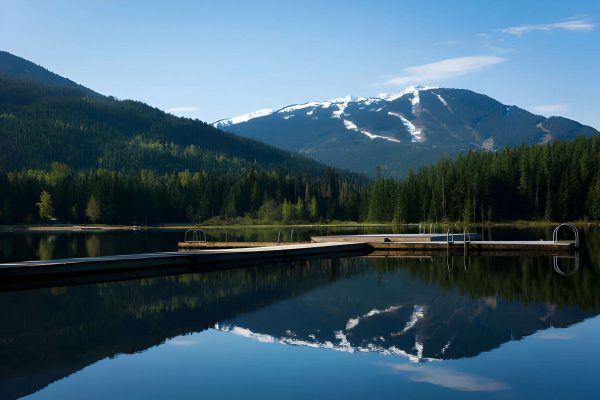
If all the hikes mentioned above, except for Brandywine, seem a bit too challenging, or if you have young children in your group, Lost Lake is the perfect trail for you. This trail doesn’t require any travel up logging roads or down the highway; in fact, it’s a short stroll from the center of Whistler, making it ideal for rolling out of bed and hitting the trail.
Lost Lake is a pleasant, level five-kilometer paved trail that is suitable for strollers, bikes, or those concerned about uneven ground. Consider packing a nice lunch, as a picnic area is located at the eastern end of Lost Lake, complete with washrooms. If you are feeling adventurous, pack your swimsuit in your backpack; Lost Lake warms up to a point where some people enjoy swimming here.
Lost Lake is the easiest of the trails in this area. If you wish to extend your walk or are looking for a challenge, you can easily connect to one of the other routes linked to Lost Lake. However, keep an eye out for mountain bikes, as all trails are designated as multi-use, allowing biking.
8. Rainbow Lake
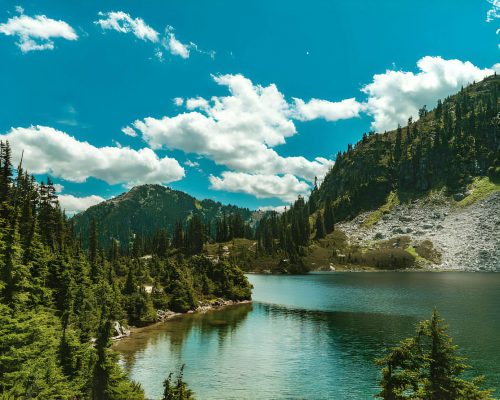
Rainbow Lake offers a hike that encompasses the best of everything. The well-maintained trail begins on the west side of Alta Lake in Whistler, ascending steadily by 850 meters over eight kilometers (16 kilometers return). The trail takes you through the woods, along creeks and a waterfall, over bridges, and past bogs.
The lake itself serves as the turnaround point, perfectly framed by the surrounding mountains. It’s an ideal spot to enjoy your lunch. However, resist the temptation to take a dip, as Rainbow Lake is a source of drinking water for the Resort Municipality of Whistler, so it’s best to stay out.
The hike’s length and elevation make it a perfect day hike – not too long that you need to start first thing in the morning, but enough to make you feel like you’ve earned a good dinner at one of Whistler’s restaurants.
9. Cheakamus Lake
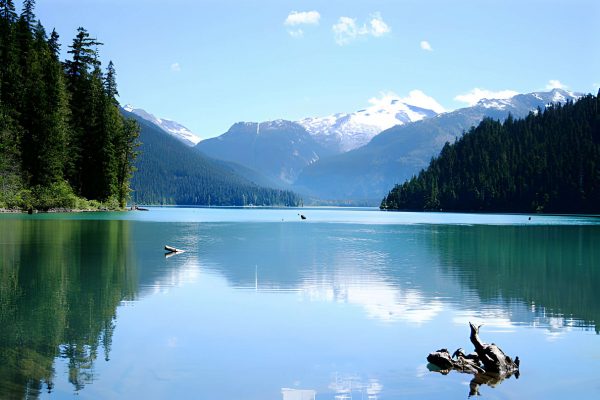
Situated south of Whistler Mountain, there lies a glistening lake with a mesmerizing blue hue that must be seen to be believed. However, reaching this natural wonder, Cheakamus Lake in Garibaldi Provincial Park, requires a bit of effort, though not an ascent up a mountain. This hike stands out among Whistler area trails, offering a tempting reward for the journey.
The trail to the lake is predominantly flat, non-technical, and marked, making it suitable for hikers of all skill levels. This round-trip hike spans approximately eight kilometers with minimal elevation gain. Along the trail, you’ll pass a river and follow the lakeshore to a stunning lookout point – an ideal spot to enjoy a meal before retracing your steps.
10. Wedgemount Lake
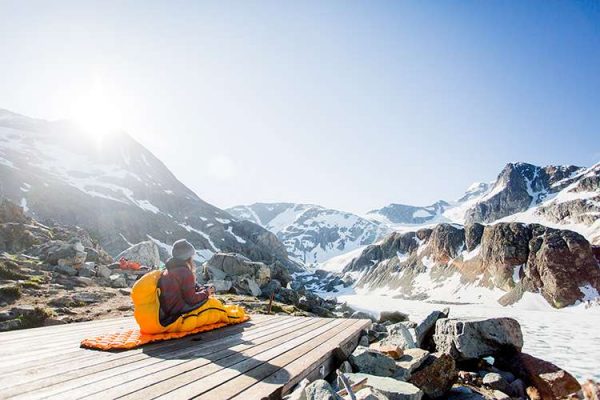
If you are up for a steep and challenging adventure, Wedgemount Lake is the hike for you. Wedge Mountain, resembling a large wedge of cheese, stands prominently on the Whistler skyline at an impressive 2,891 meters, making it the highest peak in Garibaldi Provincial Park. The trailhead, conveniently located just north of town and easily accessible from the highway, marks the starting point.
While the alpine lake at the summit offers breathtaking views, reaching it is no easy feat. Be prepared for a demanding ascent on a technical trail that climbs relentlessly. Although the trail itself is only seven kilometers each way, it involves a 1,200-meter elevation gain before reaching the lake.
While some hikers complete the journey in a day, many opt for an overnight experience. The lakeside campsites, considered among the most spectacular globally, require reservations through Garibaldi Provincial Park’s official website.
11. Elfin Lakes
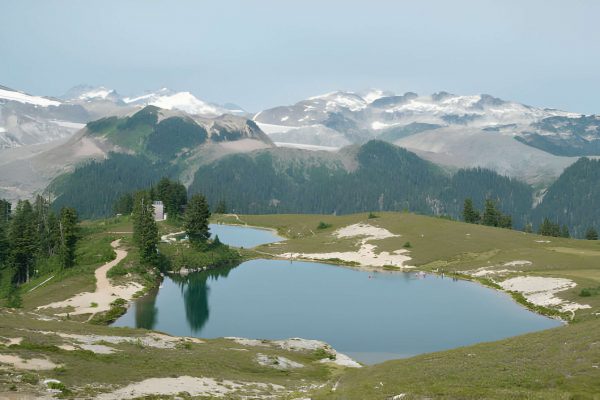
The Elfin Lakes hike strikes a pleasant balance between distance and elevation. Covering a round trip of 22 kilometers, the elevation gain is modest at only 600 meters. When you consider the overall hike, it resembles more of a leisurely walk-through of stunning landscape rather than a strenuous climb over a short distance (though there are initial switchbacks).
Regardless of your contemplations, the hike is rewarding and certainly worth undertaking. The trail offers somewhat limited views as you spend a significant portion amid trees. However, once you reach the high alpine meadows and behold the vistas of Mount Garibaldi and Mount Atwell, you might find it hard to leave.
The scenery at this elevation is extraordinary, showcasing Mother Nature’s finest. The area truly comes alive, especially during mid to late July when the meadows burst into a vibrant display of colors with the summer blooms of wildflowers.
If your feet are weary, a dip in the lake provides a refreshingly icy experience!
FAQs
Q: What is the best time of the year to hike near Whistler?
A: The summer months, from June to September, are ideal for hiking, offering pleasant weather and clear trails.
Q: Are these trails suitable for beginners?
A: Yes, each trail has options for hikers of varying skill levels, but it’s important to choose trails that match your fitness and experience.
Q: Are there any guided hiking tours available?
A: Yes, guided tours are available, providing informative and safe experiences for those unfamiliar with the trails.
Q: What wildlife might one encounter during these hikes?
A: Wildlife encounters may include birds, squirrels, and, in more remote areas, possibly bears or deer. It’s crucial to respect their habitats and observe from a distance.
Q: How can I contribute to the conservation of these natural areas?
A: Participate in organized clean-up events, follow Leave No Trace principles, and support local conservation initiatives to ensure these trails remain pristine for future generations.

